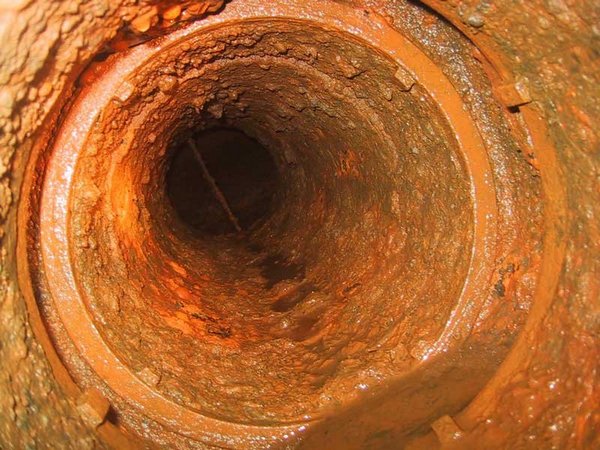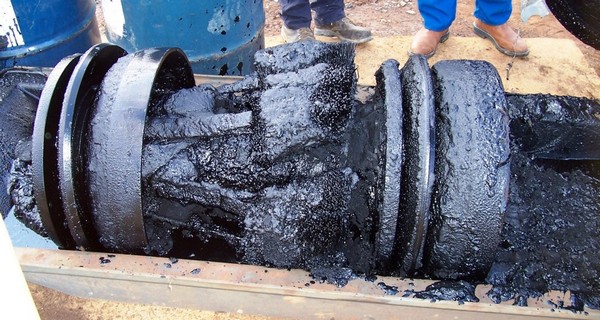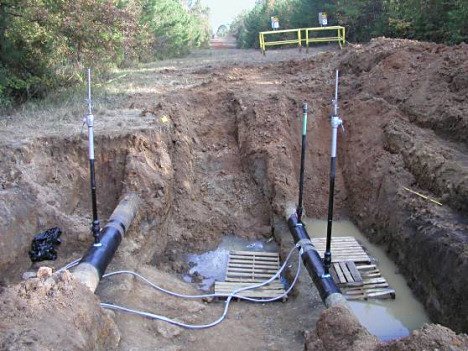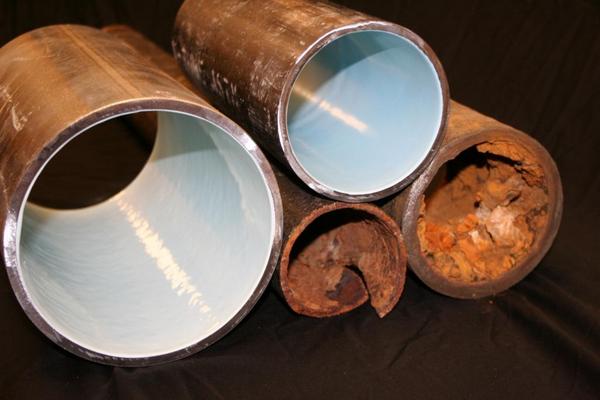Internal Corrosion
Pipeline may get corroded internally due to nature of fluid flowing inside and due to various other factors. Linings may be used for internal corrosion protection, provided the lining material does not degrade following long-term exposure to the transported fluid, at the pipeline pressure and temperature conditions.
Tags : #Piping_Engineering #Pipeline_Engineering #Pipeline_Corrosion #Pipeline_Coating

Pyrophoric Dust (FeS) in Natural Gas Pipelines
Pyrophoric dust (FeS) may be produced in natural gas pipelines, when the gas contains H2S (even in small quantities), under specific conditions. FeS will form when the gas is in contact with bare steel pipe over a sufficient period, and the water vapour content of the gas is in excess of 60 percent of the content corresponding to the water dew point. FeS may create operational problems, particularly at pressure reduction stations; it is a hazard when it comes in contact with air, e.g. when it is recovered at a pig receiver (self ignition). Finally, the dust can accumulate at isolating flanges and, since it is conductive, render them ineffective. When pyrophoric dust is expected, internal coating of the pipeline is strongly recommended (coating at the field welds, however, is not required).

Provisions for corrosion monitoring
For buried or submerged pipelines, the occurrence of coating damage is normally monitored by cathodic protection measurements.
If the pipeline is made of corrosion resistant material (e.g. duplex, GRP, cladsteel), there is normally no need to monitor for internal corrosion. For carbon steel pipelines, the control of internal corrosion is normally by applying a tight control on the process parameters (e.g. water dew point in gas transmission systems, injection of corrosion inhibitor).
Corrosion probes and corrosion coupons cannot be relied upon to provide a definite assessment of the pipeline condition, nor to demonstrate that internal corrosion is not occurring.

Some indication of internal corrosion in the pipeline may be given by an analysis of debris recovered following a pigging operation; this technique is qualitative and is not able to provide any estimate of corrosion rates.
When corrosive conditions which may lead to significant corrosion damage are present, either internally or externally, a complete inspection of the pipeline should be carried out using intelligent pigging. Intelligent pigging should also be used when the criticality of the pipeline is such that proof of continued integrity is required.
Internal Coatings
Internal coatings, such as fusion bonded epoxy or two pack phenolic epoxy paint (flow coat), may be used in the following situations: to limit corrosion during transit and storage, to facilitate precommissioning, to reduce hydraulic friction losses, pig wear and the formation of pyrophoric dust.

Care is required to ensure continuity of the lining at the joints. Polyethylene linings are susceptible to attack by aromatics, and to permeation of any dissolved gas in the transported fluid. To prevent lining collapse when the pipeline is depressurised, the permeated gas should be relieved from the annulus.
Internal coatings shall not be used for the purpose of preventing corrosion, because holidays in the coating cannot be completely avoided. In some situations, internal coatings may be applied for internal corrosion mitigation, when the expected leaks are deemed acceptable, following a review of the safety and environmental aspects.
Internal paint markings for individual pipe identification should not be used when corrosive conditions will be present in service.
